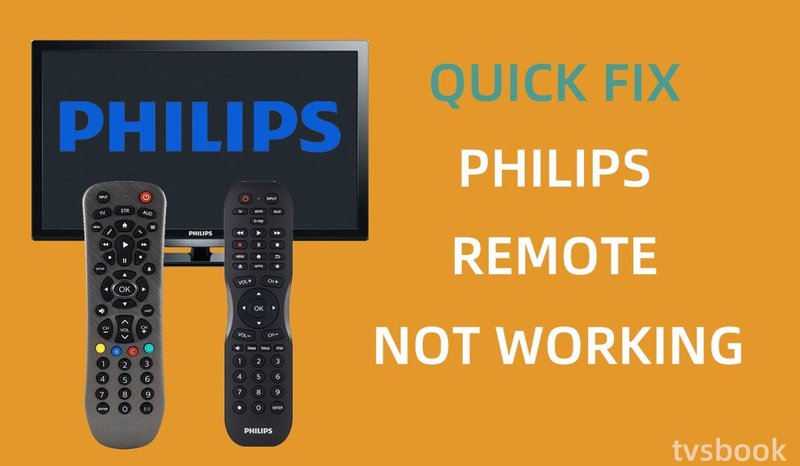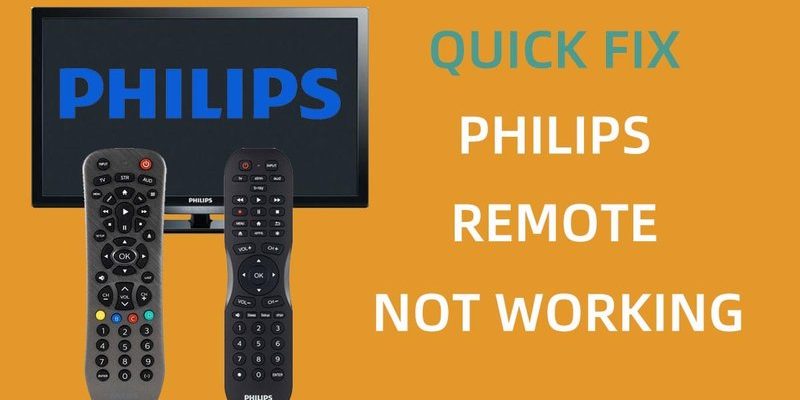
So, why do these remotes, meant to make our lives simpler, sometimes feel like an extra puzzle piece that doesn’t quite fit? Like lending your favorite hoodie to a friend only to never get it back, you expect things to just work. I’ll walk you through why a Philips Universal Remote might be giving you a headache—and what you can do to make things click again.
Before we dig in: universal remotes (especially from Philips, a big name in home electronics) are designed to control nearly any TV, soundbar, or streaming box. The idea is one remote to rule them all. But often, the magic lies in the details: codes, batteries, syncing steps, and that mysterious “reset” you never want to try but sometimes have to. Let’s break down the most common problems and real-world fixes.
1. Philips Universal Remote Not Syncing With Your Device
If you’ve ever tried to pair your Philips universal remote with your TV and felt like you were speaking two completely different languages, you’re not alone. Honestly, syncing issues are pretty much the bread and butter of universal remote complaints. When the remote won’t talk to your device, it’s usually because the right code wasn’t entered—or it didn’t go through properly.
Here’s the thing: every TV or device has its own set of remote codes. Philips has a huge database, but you have to enter them exactly as shown, sometimes using the old-school method of holding down a button while typing numbers. If you slip up or rush, the remote might not register the correct code and, well, nothing will happen. It’s like sending a text but forgetting to hit send.
To double-check if it’s synced, press the “Power” or “Volume” button after entering the code. If your TV flickers or changes volume, you nailed it. If not, rinse and repeat with the next code in the list. I once spent half an hour trying different codes for my old Samsung TV—turns out, the right one was way down the list! Be patient, and keep your device list handy.
Quick Resyncing Tip
Sometimes, unplugging your device for 30 seconds before retrying the code can clear up invisible communication glitches. Weirdly, it works for a lot of people.
2. Remote Buttons Not Responding Or Sticking
Let’s be real: few things are as annoying as wrestling with a remote that ignores half your button presses. Maybe the “Menu” button is fine, but the “Volume Down” feels like pressing a raisin stuck under plastic. This is typically a wear-and-tear issue, especially if your remote’s had a rough life on your coffee table (or, let’s be honest, stuck between couch cushions for a week).
Dust, crumbs, or even the dreaded soda spill can gunge up the buttons, causing weak or non-existent responses. Sometimes, though, it’s not even a cleanliness thing—the remote’s battery contact points can corrode, making button presses inconsistent. Imagine trying to play a video game with a controller that only works when it feels like it. Yeah, not fun.
Here’s what I do: pop out the batteries, press every single button a few times to loosen any debris, and gently clean around the buttons with a slightly damp cotton swab. If you’re feeling brave (and your warranty’s up), carefully open the remote with a tiny screwdriver and dust it out. Just remember where each piece goes—or take a photo first!
3. Incorrect Code Input Or Lost Programming
Ever have your remote suddenly stop controlling your TV, even though it worked perfectly last week? Chances are, the programming got wiped. Maybe someone sat on the remote, or you accidentally hit a weird button combo (I’ve done it—don’t judge). Philips universal remotes rely on stored codes, and power surges or battery swaps can sometimes reset these.
If you’re not sure whether the remote’s programmed, try the most basic functions—like power or volume. If nothing works, you’ll need to re-enter the device code. Check the manual or the Philips online code database. Usually, it’s a matter of holding the “Setup” button until the light stays on, keying in the right code, then checking if the device responds.
A quick tip: keep a sticky note with your go-to code inside the battery compartment. It’s saved me more times than I’d care to admit!
4. Battery Issues: Low Power, Dead Batteries, Or Poor Contact
You might be wondering: do batteries really cause THAT many issues with a remote? Oh yes. Remotes are like pets—they give you signals when they’re hungry for power. If your remote stops responding, acts sluggish, or only works up close, weak batteries are often to blame. I’ve had situations where the remote only worked if I held it at a weird angle, like some kind of wizard summoning signal.
First, try swapping in fresh batteries. Make sure they’re inserted the right way (it happens to the best of us). Also, give the battery contacts a once-over—use a pencil eraser or dry cloth to clean off any corrosion or grime. If your remote still seems moody, it could be a deeper hardware issue, but honestly, 80% of the time, it’s just old batteries.
Sometimes, cheap dollar-store batteries can leak or fit poorly, causing the remote to lose power intermittently. If you’re using it daily, stick to a decent battery brand. You’ll thank yourself later.
5. Trouble Resetting Or Reprogramming The Remote
Resetting a Philips universal remote can feel like entering *The Matrix*—secret button codes, blinking lights, and lots of guesswork. If your remote is acting possessed or you want to start from scratch, a reset might be in order. But how do you actually do it?
Most Philips remotes have a hidden reset process: hold down the “Setup” button (or a dedicated “Reset” if you’re fancy) for about 10–15 seconds until the LED indicator does something odd—like blink twice or stay solid. Then release. This wipes out all programmed codes, so you’ll need to pair each device again. I know, it’s a pain, but sometimes it’s the only way to fix weird, stubborn issues.
If you’re like me and get nervous wiping out everything, jot down your device codes first. Also, after a reset, try pairing the remote with just one device at first to see if the basic functions work. That way, you know the reset actually solved the problem before putting in all the codes again.
6. Signal Interference And Range Limitations
Ever try using your remote but nothing happens—until you stand smack in front of your TV, waving the remote like you’re at a concert? Interference is a major, often overlooked reason why Philips universal remotes don’t always play nice.
TVs and other devices rely on infrared (IR) signals, which need a clear line of sight. Even something as innocent as a decorative bowl on your TV stand can block the signal. Wireless routers, LED lights, or other remotes on a similar frequency can also confuse things. Once, I realized my cat’s metallic collar was blocking the signal—true story.
If you’re struggling with range, try removing obstacles or turning off other electronics nearby. Point the remote directly at the sensor—sometimes it helps to raise it up or even bounce the signal off a wall if you’re at an angle (not kidding, this can work!). If all else fails, check if the IR light is actually working by using your phone’s camera—point the remote at your camera and press a button. If you see a faint flashing in the camera preview, the IR light is good. If not, the remote may need replacing.
7. Compatibility Issues: Not All Devices Are Supported
Here’s the hard truth: even the best universal remotes can’t control every device out there. Philips universal remotes are awesome for TVs, Blu-ray players, and soundbars—but if you’ve got a super new gadget or an obscure brand, the remote might not have the right codes.
Sometimes, you can try “auto-search” mode, where the remote scrolls through every code it has and stops when it finds one that works. This process can take forever and doesn’t always guarantee success, but it’s worth a shot if your device isn’t listed. Alternatively, some high-end remotes let you learn codes directly from the original remote, button by button. It’s tedious, but if you only need basic functions, it can save the day.
If all else fails, compare your Philips remote with a manufacturer’s brand remote. Sometimes, shelling out for the official one is the only way to guarantee compatibility—especially for smart TVs with weird menus.
8. Universal Remotes Vs. Brand Remotes: Which Is Better?
Let me explain the real showdown: Philips universal remote vs. the remote that shipped with your device. Universal remotes win on convenience—you only need one. But they often miss out on specialty buttons (like smart menus, settings shortcuts, or voice controls) that brand-name remotes offer.
If you’re only using basic features—power, volume, input—universal remotes are perfect. But if you want every bell and whistle, original remotes usually fit better. You may find, for instance, that a Philips universal remote can turn your smart TV on, but not launch Netflix directly. That’s because universal remotes use generic codes.
Honestly? Use the universal for day-to-day, but keep your original remote in a drawer for that “just in case” moment. Saves headaches down the road.
Look, remotes sometimes feel more complicated than they need to be, but most of the time, the fixes are simple: new batteries, correct codes, a quick clean, or just moving that oddly placed bowl off your TV stand. Philips universal remotes have their quirks, but with a bit of patience (and maybe a sticky note for your codes), you’ll get things working smoothly again.
If you hit a wall, don’t stress—it happens to everyone. Try the troubleshooting steps here, compare with your original remote, and don’t be afraid to reset things if needed. Sometimes, that’s all it takes to get your movie night back on track. And hey, if all else fails, there’s always the power button on the TV. But hopefully, with these fixes, your remote will be back in action before you need it.
